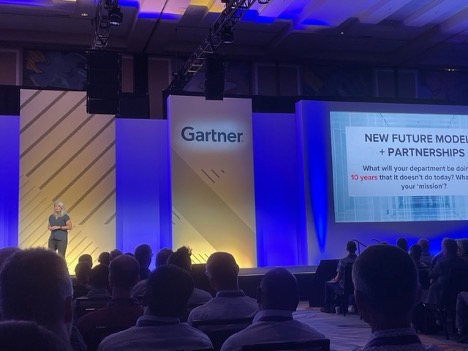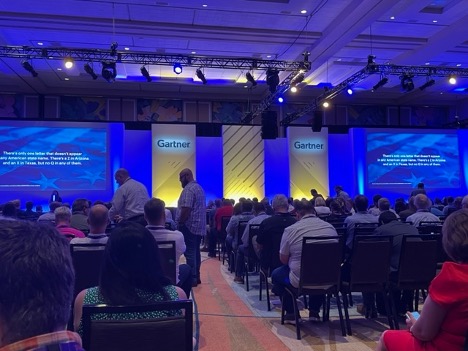Angus Frost from Burger Consulting Group (BCG) recently attended the Gartner Data and Analytics Summit in Orlando, Florida. The event was a vendor neutral conference spread over three days and saw attendance from about 5,500 data practitioners. Talking to several fellow attendees, this was a larger attendance than in years past, clearly indicating the importance of data and analytics across all industries and sectors. The opening keynote focus was on how to “Unleash Innovation, Transform Uncertainty”. Gartner analyst presented a framework for thinking about data innovation and removing uncertainty.
- Focus on small data (what data can we easily source or use to create synthetic data). For the construction industry, we already have data. Depending on what insights we are looking for, we may not need to create a massive data warehouse or data lake house (more on this distinction later). We have data in our existing systems and spreadsheets that can be used to provide analytics.
- Find the right insights by identifying the right questions to ask. This will undoubtably be an iterative process as greater analysis often leads to better questions. For our industry we need to decide whether we want to look forwards or backwards. Do we want to analyze where we’ve been as an organization or look at predictive analytics to help us plan for the future. It will likely be a hybrid of the two.
- Decide how specific analysis will drive outcomes. What is the relationship between the type of analytics provided and the timing of when it is provided to help drive a business decision. This relates back to the first item. What is the minimum information we need (and already have access to) that can help with decision making. What are the decisions we can’t make now and why?
- Data Governance doesn’t have to hinder data innovation. If anything, innovation can help identify where governance is required. However, don’t just apply data governance for governance’s sake.

From the opening to keynote to the closing one and every session in between, there were plenty of lessons learned that can be applied to a data strategy for individual contractors. While Master Data Management (MDM) still has a role to play as part of a data and analytics strategy, the questions being asked by the business needs to drive which data to include in an MDM approach, rather than starting with all Master Data. While data warehouses and data lakes (now data lake houses) still have a place in a data strategy, (data warehouses help answer the question of what happened and why while data lakes are useful for answering the question of what is going to happen and when and what should I do about it), with enhancements in machine learning (ML) and Artificial Intelligence (AI), the need to build physical data warehouse/lake house is evolving. Many of these predictive tools can be applied to native data sources. Above all lessons learned though the common theme, was that when talking about Business Data, the focus in the past has been on the Data, whereas it needs to be on the Business. Any data and analytics strategy needs to be driven by business needs. Too many initiatives in the past focused on collecting all the data first and then talking to the business about what data they wanted to use.
Regardless of the data and analytics strategy approach, skilled resources will be needed to execute. The most critical roles to begin with are those of a Data Engineer, Data Architect, Business Analyst and a Data Scientist depending on the questions being asked. The good news is that within the data and analytics space, there has been sufficient maturity to develop highly skilled individuals and tools that have benefited from past mistakes. The construction industry has the advantage of being able to leverage the lessons learned and begin benefiting from a data and analytics strategy faster than other industries in the past.

